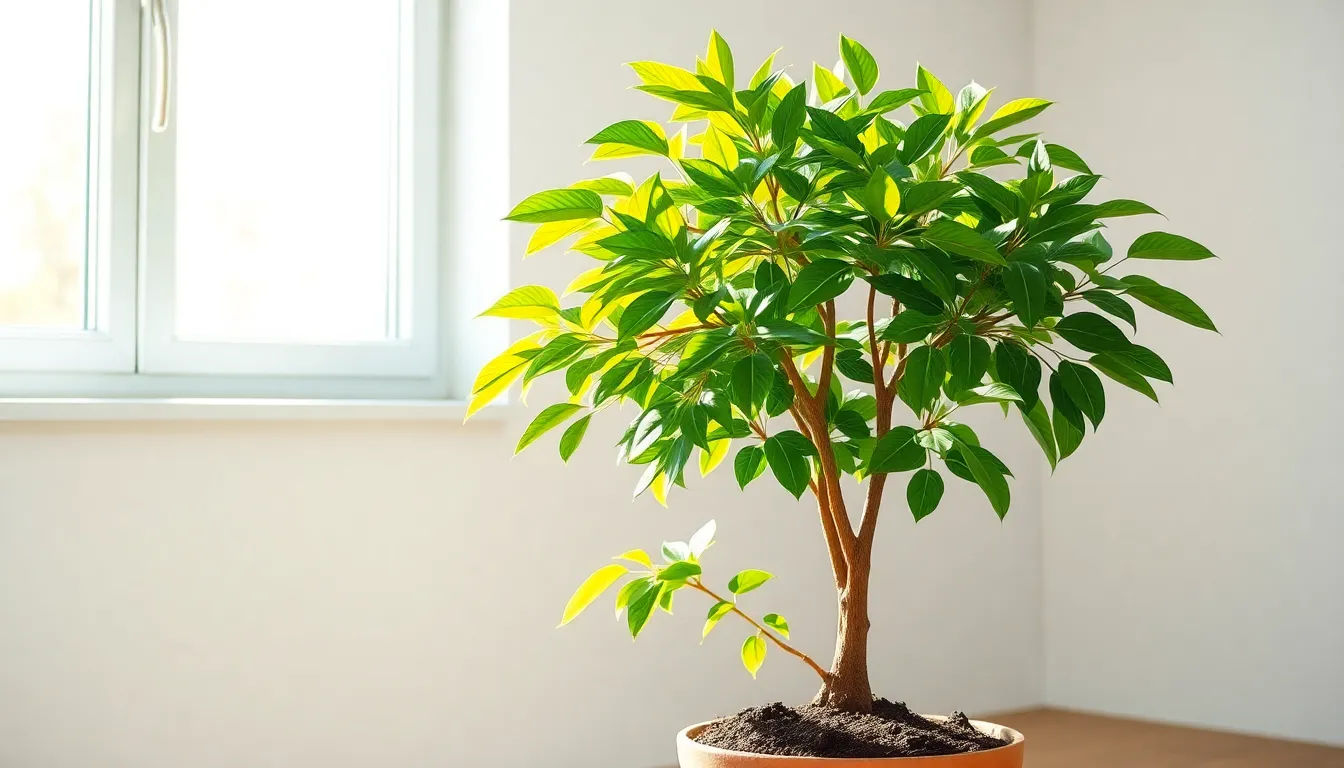
If you’ve ever dreamed of a plant that not only beautifies your space but also brings a dash of good fortune, the money tree is your answer. This charming little guy doesn’t just sit pretty; it’s a symbol of prosperity and abundance. But before you start throwing dollar bills at it, let’s talk about the real secret to keeping your money tree thriving: water.
How Often Water Money Tree
The money tree plant is known for its aesthetic appeal and symbolic role in promoting prosperity. Proper care, especially watering, is essential for its growth.
Origin And Care Requirements
Originating in Central and South America, the money tree thrives in warm, humid environments. It prefers bright, indirect light but can adapt to lower light conditions. Regular watering every 1 to 2 weeks keeps the soil moist but not soggy. Overwatering can lead to root rot, so monitoring soil dryness is vital. Fertilizing every month during the growing season ensures the plant receives essential nutrients.
Common Myths About The Money Tree
Several myths surround the money tree, influencing its care. Some believe it requires constant sunlight, but it actually prefers indirect light. Others argue that it attracts wealth. While its symbolism supports this idea, wealth doesn’t solely depend on the plant’s presence. Another misconception involves the watering frequency, with many thinking daily watering is necessary; however, infrequent watering is more beneficial. Understanding these myths helps in proper care and enhances the plant’s health.
Factors That Influence Watering Frequency

Watering frequency for a money tree depends on several factors. Understanding these factors ensures proper care and promotes the plant’s health.
Environmental Conditions
Environmental conditions significantly affect watering needs. Humidity levels play a crucial role in determining how often to water; higher humidity usually requires less frequent watering. Soil moisture also needs consideration. If the plant is in a bright, warm room, it may require more frequent watering. Conversely, a cooler location may lead to slower evaporation, extending the time between waterings. Seasonal changes impact temperature and light exposure, which also adjusts the watering schedule.
Plant Size And Growth Stage
Plant size and growth stage are vital in determining water frequency. A young money tree absorbs moisture differently than a mature one. Smaller plants typically need less water due to their limited root systems. Larger, more established plants, however, may require more water to sustain their increased growth. Additionally, during active growth periods, such as spring and summer, the plant’s water demands increase. Adjusting watering based on size and growth ensures the plant receives adequate hydration.
How Often To Water Your Money Tree
Watering frequency varies based on multiple factors. Ideally, a money tree needs watering every 1 to 2 weeks, ensuring the soil stays moist but not soggy.
Signs Of Underwatering
Underwatering manifests in several visible symptoms. Leaves may turn yellow and drop, indicating stress from dehydration. Additionally, the plant may appear wilted or shriveled, with leaf edges crisping up. Soil dryness is another key indicator; when the top inch feels dry, it signifies the plant needs hydration. Checking the moisture level regularly helps avoid these issues. Keeping an eye on humidity levels and temperature assists in maintaining appropriate watering.
Signs Of Overwatering
Overwatering also presents notable signs that indicate trouble. Wilting leaves may occur despite soggy soil, creating confusion. Root rot is a serious risk that emerges from excessive moisture, leading to black, mushy roots. Yellowing leaves can be present, especially lower ones, highlighting potential drainage issues. Additionally, mold growth on the soil surface suggests too much water. Monitoring these signs ensures proper water balance for a healthy money tree.
Best Practices For Watering
Proper watering techniques enhance the health of a money tree. Regular monitoring of soil conditions ensures ideal moisture levels.
Soil Testing Techniques
Soil testing serves as a reliable method for assessing water needs. One approach uses finger testing; inserting a finger into the soil to a depth of about an inch reveals moisture levels. If the soil feels dry at this depth, it’s time to water. A moisture meter offers another option; this tool measures soil moisture accurately, preventing overwatering. Regular checks, especially in warmer months, promote optimal growth. Always consider soil type since well-draining mixes allow excess water to escape, minimizing root rot risks.
Seasonal Adjustments
Seasonal changes necessitate adjustments to watering schedules. During spring and summer, the money tree typically requires more frequent watering due to active growth phases. Water every 1 to 2 weeks during these seasons. Contrastingly, colder months often lead to slower growth, thus reducing water needs. In fall and winter, checking soil moisture becomes crucial, as plants usually dry out more slowly during this time. Humidity levels can also fluctuate; drier winter air may prompt adjustments to maintain adequate moisture.
Growth Stage
Caring for a money tree involves understanding its unique watering needs. By paying attention to environmental factors and the plant’s growth stage, one can ensure it thrives. Regular monitoring of soil moisture will help prevent the pitfalls of underwatering and overwatering. Adjusting the watering schedule with the changing seasons will support the plant’s health and vitality. With the right care and attention, the money tree can flourish, bringing not just beauty to a space but also the positive energy it symbolizes.
